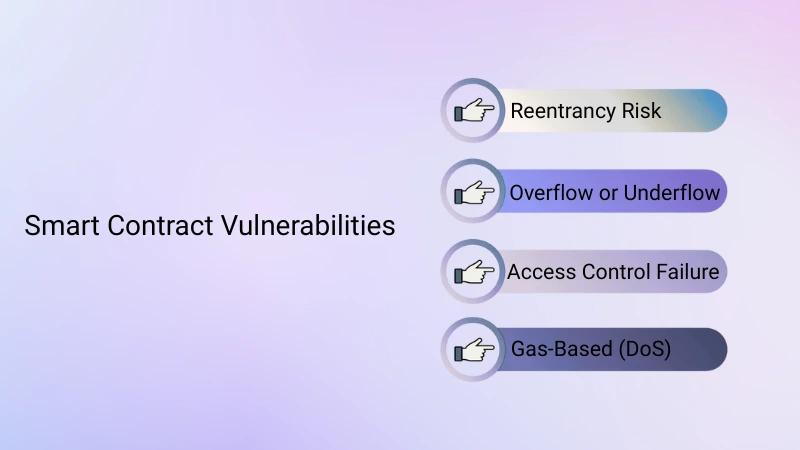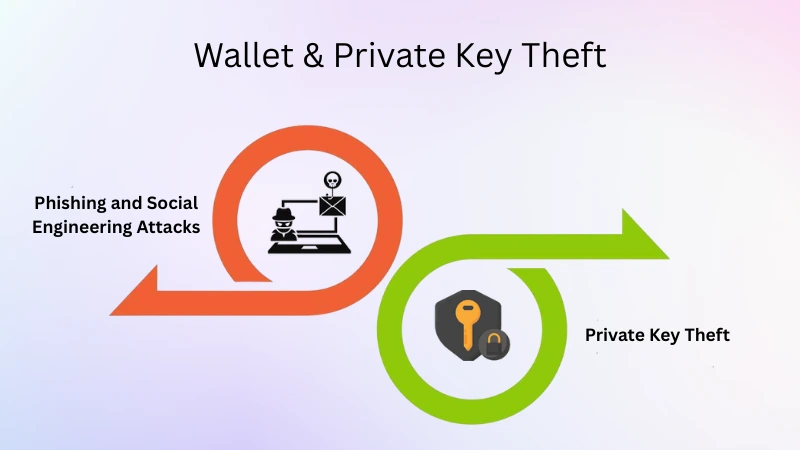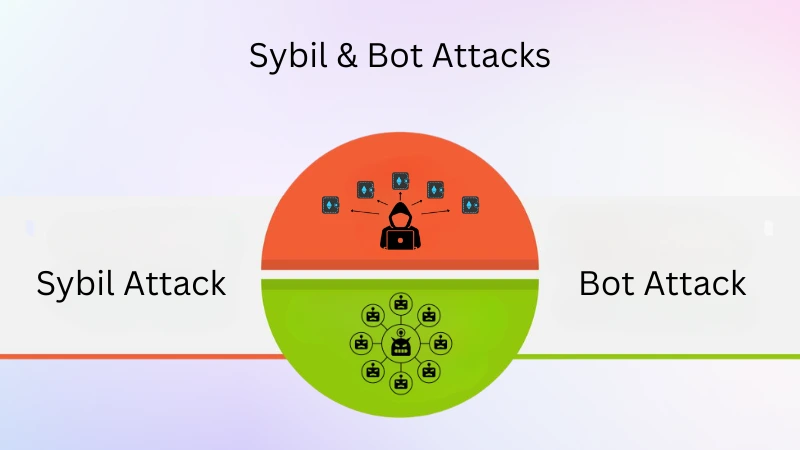Blockchain gaming fundamentally transforms the entire gaming industry. It offers players true digital ownership of in-game assets, provides decentralized economies, and offers play-to-earn models wherein in-game assets hold real-world value.
But what if the time and money you invested into your favorite blockchain game is wasted on having your assets stolen, your governance vote manipulated, or your account hijacked by an unknown attacker? How secure are these decentralized blockchain gaming platforms in reality?
In this blog, we will understand what blockchain gaming security is, the most significant security risks and threats and some mitigation steps that can be used to prevent them from occurring.
Understanding Blockchain Gaming Security
Blockchain gaming security is a comprehensive term that refers to the technologies, cryptographic protocols, and strategic practices employed to safeguard blockchain-based gaming systems.
Blockchain makes games better; by its nature, blockchain brings a high level of security and protection due to its decentralized structure. The cryptographic algorithms and continuity of the data blocks make tampering with data extremely difficult.
But still, despite all the security measures taken in place, risks like phishing attacks, endpoint vulnerabilities, routing attacks, private key theft, sybil attacks, etc., can happen. It becomes essential that we understand how these vulnerabilities affect blockchain gaming and what steps we can take to mitigate them.
Top Security Risks in Blockchain Gaming and Their Mitigation
These are some of the blockchain gaming security risks that can be injected when building a blockchain game or even after it’s completed; these include:
-
Smart Contract Vulnerabilities
There are multiple vulnerabilities associated with core smart contracts in blockchain gaming, some of which are:
- The Reentrancy Risk
This vulnerability is the classic exploit where the functions that make external calls before updating the state can be exploited through recursive calls. This type of vulnerability can impact gameplay by duplicate reward claims, infinite item minting, or treasury drainage.
- An Integer Overflow or Underflow Vulnerability
At this risk, the legacy contracts can exceed the variable limits of their arithmetic operations and wrap around unexpected values. Due to this flaw, players with legacy contracts could overflow their item count to acquire an infinite number of items.
- Access Control Failure
In an access control failure, the missing or incorrect permission checks allow unauthorized actions, and as a result, the malicious players could mint rare NFTs and generate unlimited in-game currency, or they could unlock special abilities that were meant only for the admins or game masters.
- Gas-Based Denial of Services (DoS)
In this, the unbounded loops could exceed the blocked gas limits, making functions impossible to call back. This affected games because, if rewards are given out in a single loop, a growing player base may cause payout entries to freeze, preventing any players from accessing their in-game rewards or winnings.
Mitigation Strategies for Smart Contracts Vulnerabilities
- Engage Professional Auditors
Always have top security firms specializing in blockchain audit a smart contract before deploying it. You can consider ConsenSys Diligence and Quantstamp.
- Use Established Frameworks
There are many open and freely available frameworks like OpenZeppelin that provide battle-tested contract templates that have already addressed common security pitfalls.
- Continuous Monitoring & Upgrades
You should implement upgradeable smart contracts through proxies, where they maintain regular monitoring to address any unusual behaviors.
- Follow Best Development Practices
You should apply the Checks-Effects-Interactions (CEI) pattern to prevent reentrancy and implement fail-safe mechanisms such as circuit breakers and time locks.
2. Wallet & Private Key Theft
In blockchain, wallet and private key theft happens when a malicious person gains unauthorized access to your wallet or the keys that are associated with it, allowing them to transfer your assets without asking for your permission. It is done in one of the following ways:
- Phishing and Social Engineering Attacks
Phishing is one of the most common methods used to steal private keys, seed phrases, or login credentials. Attackers will impersonate some trusted entities, like game makers or support teams, to trick players into handing out their sensitive information.
- Private Key Theft
A private key is the sole proof of ownership of any asset in blockchain gaming. The theft occurs if these keys are exposed to malware, poor storage, or the careless sharing of private keys. Once stolen, there is no way to undo the process.
Mitigation Strategies for Wallet & Private Key Theft
- Player Education
It is important to educate players that no legitimate organization will ever ask to hand out their private keys or seed phrases.
- Official Communication Channels
Game makers should have a verified social media account or an official website to make announcements for updates or promotions.
- Hardware Wallets
It is recommended for all players to store their key values in hardware wallets like Ledger or Trezor, which keep private keys in an offline medium and help prevent exposure to malware or phishing attempts.
- Multi-Signature Wallets
This is an advanced option for high-value accounts where it is advised to use multisig wallets, where multiple keys are required to authorize any transaction.
3. Sybil & Bot Attacks
Sybil and bot attacks are especially more damaging for the blockchain gaming environments that incorporate governance mechanisms, rewards, or in-game economies based on user participation.
- Sybil Attack
In this type of thread, a single attacker creates multiple fake identities, like wallet addresses or gaming accounts, to gain a disproportionate influence and then manipulate the voting systems.
- Bot Attack
In a bot attack, the automated scripts are used to perform repetitive tasks like farming some in-game resources, spamming the marketplaces, or overwhelming game services. This gives attackers an unfair advantage and causes a disruption in service.
Mitigation Strategies for Sybil & Bot Attacks
- Staking Requirements
Programmers should introduce a staking mechanism where participation in governance or receiving rewards requires holding a minimum amount of tokens, making Sybil attacks uneconomical for attackers.
- Behavioral Analytics & Bot Detection
Some advanced behavioral analytics should be deployed to detect suspicious actions and patterns, like accounts that act unnaturally fast, execute repetitive actions, or follow predictable scripts. Then such types of accounts must be flagged and investigated.
4. NFT & Asset Exploits
NFTs are the in-game assets that represent the real-world value of any digital asset in the blockchain game. Attackers that can target these assets can let them hold a copy of NFTs, create fake NFTs, steal valuable items, or change the attributes of assets to get an unfair advantage in the game. Some of the most common exploits include:
- Unauthorized Minting
These are due to the flaws in smart contracts that allow any attacker to mint an unlimited number of NFTs without making payments or meeting the game requirements.
- Asset Duplication
The weaknesses in how the game’s assets are linked to the blockchain records can lead to some assets being duplicated and being issued to multiple players at a time.
- Attribute Manipulation
It is due to poorly designed smart contracts or some off-chain logic that is used to modify attributes of NFTs, such as power, rarity, or level, bypassing the intended game mechanics.
Mitigation Strategies for NFT & Asset Exploits
- Strict Minting Controls
It is important to enforce strict minting rules in smart contract logic, and programmers should regularly authenticate the payment verification in minting functions.
- Immutable Metadata & Provenance
The storage of NFTs’ metadata and attributes should be stored immutably on the blockchain through a trusted decentralized storage protocol like IPFS, and it is important to guarantee that once an NFT is minted, its creation history and creator data are permanently recorded on a verifiable ledger.
5. Exchange & Marketplace Risks
Blockchain games rely on exchanges and NFT marketplaces, allowing players to buy, sell, and trade in-game assets like NFTs, tokens, and digital collectibles. These platforms are essential for the game economy but may introduce security risks that include:
- Rug Pulls and Exit Scams
It is an investment scam where creators of some cryptocurrency project suddenly withdraw liquidity or disappear after selling assets, leaving users with worthless tokens or NFTs.
- Fake or Phishing Listings
In this scam, some malicious actors create fake asset listings or fraudulent NFTs that look to be legitimate but have no real value or ownership backing.
- Insufficient Transaction Validation
This is a weakness in the marketplace code that may allow front-running attacks, where attackers exploit timing to manipulate trade execution to make a profit at the player’s expense.
Mitigation Strategies
- Use Audited Marketplaces and Exchanges
You should always prefer marketplaces that use audited smart contracts and have a proven track record for security, like OpenSea and Rarible. Always avoid using any unverified or newly launched marketplaces without a trusted community or any formal audits.
- Implement Strong Listing Verification
Follow meticulous steps to authenticate NFTs, like checking the ownership history, metadata, and the legitimacy of the smart contract on which it is issued.
- Transaction Monitoring and Anti-Fraud Systems
One should continuously monitor the transactions for any abnormal patterns like manipulations in price, bulk fake listings, or attempts to front-run. Flag such malicious activities for manual review or automated blocking.
Conclusion
As we have seen, blockchain gaming is changing the landscape of online gaming, giving out new possibilities for ownership of in-game assets and earning by just playing games. These platforms’ decentralized structure eliminates middlemen and brings freedom and fair play.
We can reduce these risks by combining best practices, technology, and user education effectively. A secure game is not just about preventing hacks; it’s about building confidence, enabling innovation, and unlocking the full potential of the decentralized gaming platform.
At Technoloader, we are committed to bringing the best of blockchain game development to the table with the latest security measures taken in place to ensure a robust and secure blockchain game that can handle any malware attack.
Reach out to us right now!
 +91 7014607737
+91 7014607737
 info@technoloader.com
info@technoloader.com






